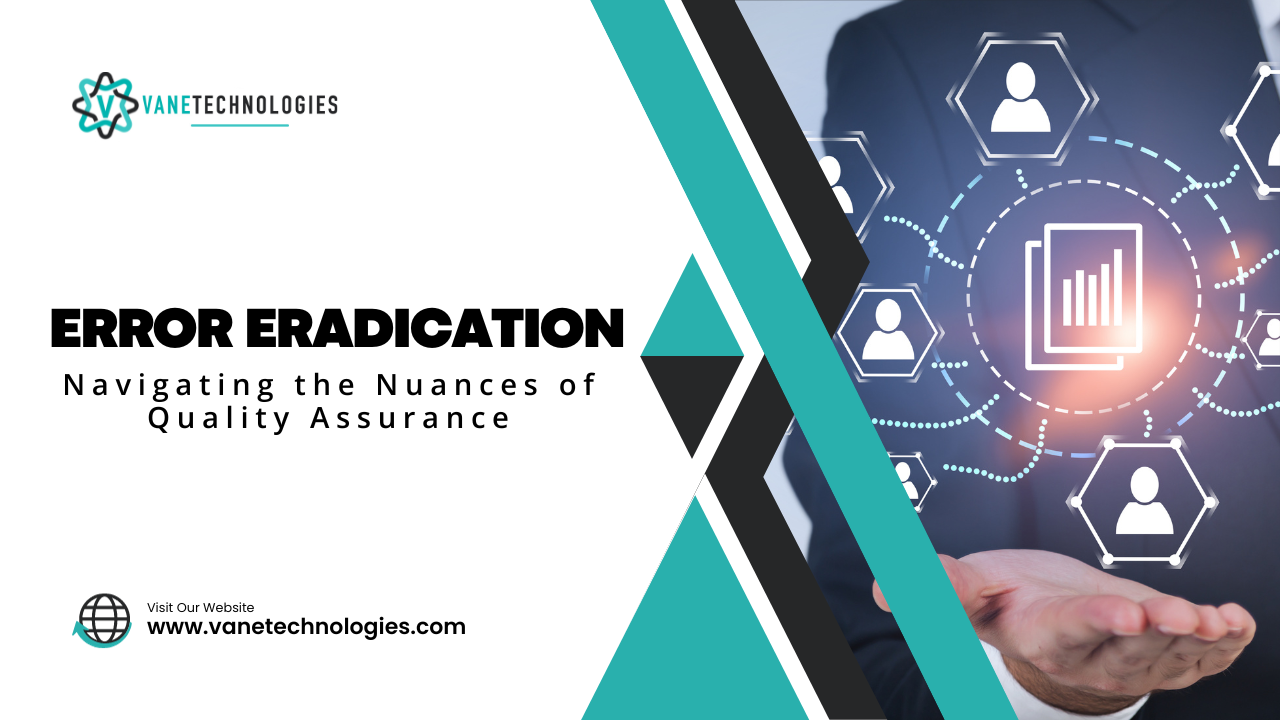
BLOGS

Error Eradication: Navigating the Nuances of Quality Assurance
Ensuring a product's quality isn't just a checkbox to be ticked—it's the heartbeat of every successful application or system. Quality Assurance (QA) stands as the vanguard against imperfections, delivering user experiences that are not only seamless but also delightful. Achieving the pinnacle of QA isn't solely about defect detection; it's about a combination of scientific methods, strategic oversight, and proactive planning.
The Science Behind QA
QA transcends mere manual testing. It brings together a systematic technique, a slew of automated testing tools, and methodologies tailored to spot anomalies that might evade a cursory look.
Test Automation
Beyond speeding up repetitive tasks, automation establishes consistency, ensuring that recurring tests always produce the same outcomes.
Performance Testing
While speed is crucial, performance testing looks at the broader picture, verifying that applications can handle varied loads, scales, and perform efficiently under different scenarios.
Security Testing
With cyber threats looming larger than ever, a stringent security protocol paired with robust testing methodologies is essential. It's not just about fixing vulnerabilities—it's about staying one step ahead.
Strategic Approaches to QA
Strategizing QA is an art. It demands a keen vision for the future, robust planning, and the agility to pivot when required.
Shift-Left Testing
Embedding QA from day one, developers and QA teams work in tandem, spotting issues before they become deeply entrenched, ensuring efficiency and resource optimization.
Continuous Integration/Continuous Deployment (CI/CD)
Melding QA into the CI/CD pipeline offers a dual advantage—continuous validation at each development phase and quicker, more reliable product deliveries.
Risk-Based Testing
By assigning priority based on potential error impact and occurrence probability, this approach ensures that the most vital components get the scrutiny they deserve.
Benefits of Quality Assurance
Enhanced User Trust
An application that functions flawlessly tends to win user trust, promoting brand loyalty.
Cost-Efficiency
Detecting errors early in the development cycle is significantly cheaper than fixing defects after deployment.
Competitive Advantage
In a saturated market, a well-functioning application can distinguish a brand, giving it a distinct edge over competitors.
Why Outsource QA?
Expertise
Outsourcing to experts ensures you're availing top-notch services, up-to-date with the latest in QA methodologies.
Scalability
As your product grows, so does the complexity of testing. Outsourcing provides the flexibility to scale up or down based on requirements.
Cost-Effective
Building an in-house QA team demands significant investment. Outsourcing is often a more economical choice, delivering exceptional value.
Focus on Core Activities
By delegating QA, companies can concentrate on their core developmental activities, ensuring faster time-to-market.
Vane Technologies: A Testament to Quality
Our experience at Vane Technologies underscores the transformative essence of strategic QA. Consider our collaboration with a renowned e-commerce platform grappling with checkout issues. Our meticulous QA approach—marrying automated and manual testing—pinpointed the glitches. In tandem with the development unit, we not only rectified the issue but also instated measures to forestall similar future discrepancies. The outcome? A surge in user trust, catalyzing enhanced conversions.
In this digital epoch, even minor glitches can lead to significant trust erosion, brand devaluation, and plummeting bottom lines. Quality Assurance, when orchestrated right, does more than just detect errors—it ensures a consistent commitment to excellence.
#QAExcellence #PrecisionInPerformance #VaneTechAdvantage #DigitalEraQA #TrustInTech #CraftingQuality
YOU MAY ALSO LIKE
![]() 1200 Brickell Ave., Suite 1950 Miami, Florida, 33131
1200 Brickell Ave., Suite 1950 Miami, Florida, 33131
![]() 1654 Calle Tulipan, Suite 100 San Juan, Puerto Rico
1654 Calle Tulipan, Suite 100 San Juan, Puerto Rico
![]() Manquehue Sur 520, oficina 205 Las Condes, RM, Chile
Manquehue Sur 520, oficina 205 Las Condes, RM, Chile









